Two of the five E-7 Wedgetail early warning aircraft will be converted passenger jets.
The information came to light in a letter from the Defence Committee to Government asking questions about the recently finalised £1.5bn deal.
Dr Julian Lewis, chair of the Defence Committee, asked in a letter:
“For what reason are you confident that the aircraft will be delivered in four and a half years, when the production line has been closed for five years and historically the minimum time between contract signature and first delivery of these aircraft has been at least six years?”
Stuart Andrew, Minister for Defence Procurement, answered:
“The Seattle production line for the 737NG aircraft, which is then modified to become an E-7 AEW&C, is still operating and producing multiple military variants of the 737NG (including the Poseidon P8) for the US, UK and other customers.
Boeing has sourced two 737NG from the commercial market and secured a further three production slots on this Seattle production line in 2021 and 2022 to meet our needs. The conversion of these five aircraft to the E-7 AEW&C standard will be undertaken at Marshall Aerospace’s facilities in Cambridge.
Boeing have significant experience of the conversion from the 737NG to E-7 having previously set up conversion facilities in three separate countries. They have already started work with Marshall Aerospace, bringing in an experienced team who were involved in the previous conversions to ensure lessons have been learnt and are applied.
Robust project management disciplines are being applied by industry that the Ministry of Defence (MOD) will continually monitor, for example, the MOD has recently visited Marshall Aerospace to assure itself of progress.”
We sourced some low hours aircraft in order to jump start our programme without having to wait for slots on the @Boeing skyline. It helps accelerate the initial conversions and therefore introduce the new aircraft as quickly as we can 🙂
— Assistant Chief, Royal Air Force (@Ian_Gale) May 10, 2019
The E-7 Wedgetail Airborne Early Warning and Control (AEW&C) System is able to fly for long periods of time and manage the battlespace from the sky, providing situational awareness and tracking multiple airborne and maritime targets at the same time. It then uses the information it gathers to direct other assets like fighter jets and warships.
It has already been proven on operations in the battle against Daesh in Iraq and Syria.


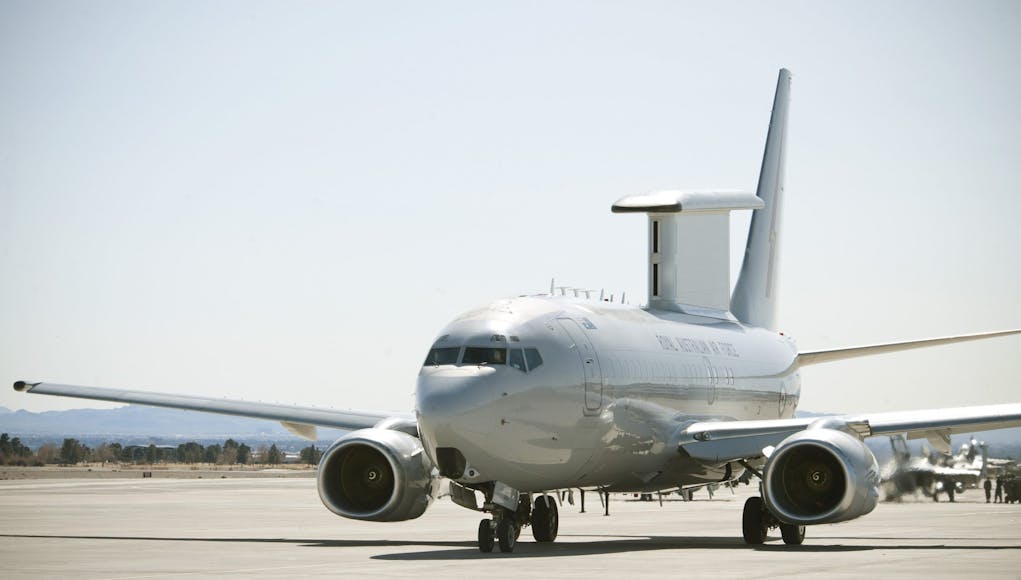
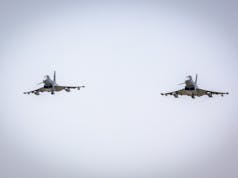




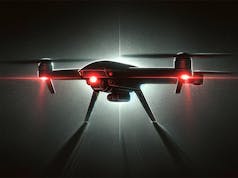


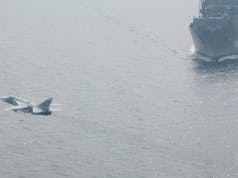
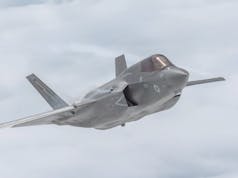

Well, I can’t say I’m surprised. Surely this is penny-pinching at its best, so five-ten years down the road from commissioning, these two airframes will either be scrapped or refurbished resulting in a similar cost to buying new in the first place?
I wouldn’t be too worried about it. I expect that they are relatively low hours airframes, and this kind of aircraft is good for 40,000 hours plus over a thirty year life. I doubt that any will be high hours airframes when they are scrapped in forty years time.
Maybe… but a number of airlines with young fleets have gone bust recently and commercial airlines will work airframes hard (in terms of hours) relative to military over the long term
Wouldnt be surprsed if airframes still outlast the technology strapped on.
Would be good to know what airframes with what background… And if does get capability in the air a couple of years early that has to be a positive.
P
It is entirely possible that they have barely done any hours at all apart from delivery flights. There are a number of aircraft that never make it to an airline as they are bought by leading companies and then demand drops so they never get leased out. Very similar to pre reg cars.
Which I believe is what the US Air Force is doing with its VC-25 replacement – a pair of 747-8s originally planned for I think a Russian airline that went bust, and so were sitting in the desert, were selected for conversion.
How old are the River joint airframes we bought not so long ago, the Radar will be the big problem not the airframe ,it is all ready an old design and is bound to have obselecent parts issues in the future.
Not particularly a problem, the RAF RC-135W were converted from some of the last KC-135 built in 1964.
The USAF has a huge fleet of KC-135 and RC-135 plus a few odd sub variants, the USAF plans to keep them in service for decades yet so there is an active sustainment program and OEM support for parts as well. The USAF actually strips them down to bare metal every few years, removes corroded structures then rebuilds with parts refurbished to as new condition or with actual new parts.
The RAF RC-135 haven’t even used up half of their airframe life yet, ironically the RAF E-3D have at least thirty years of airframe life left on them but their lack of modernisation in comparison to other operators makes them not particularly cost effective to upgrade.
It makes sense. Means we can have aircraft sooner. The second hand airframes will be refurbished before being fitted out.
I’d rather this than wait an extra 2+ years for a full strength fleet
Sensible way to get the capability in the time frame needed. It’s not like it’s a 50 year old airframe design.
If 60 year old airframes can be used for Rivet Joint, not sure why 737NG airframes should be a problem
Because the risk and cost of fitting the electronic suite into a different airframe is too great.
The RAF river joint even had copy the exact USAF paint job to avoid any technical issues.
I’m actually quite fond of the paint job!
Spot on Mike,
The RAF will never thrash these airframes like the airlines do.
They will do 30 years with ease.
I wonder if our E3’s can donate any parts for our Rivet Joints?
John, agreed civilian 737s in peak season are in the air most of time doing over 8000 miles a day.
There are a few bits and bobs that are exchangeable but I wouldn’t be surprised if the USAF buy the airframes so they can be parted out to support their own fleet.
How many commercial flights have you been on where the pilots do 10 – 15 rollers and go arounds? Welcome to the RAF…all in the name of currency.
True Leigh, but there is a difference between low level touch and goes and the airframe limiting pressurisation above 10,000ft.
No one uses and abuses large aircraft like the airlines, they are a serous investment (or lease cost) and they get every airborne fully loaded minute they can out of them.
Should have brought all 2nd hand airframes if it saves £10s millions for something else. How ild where the Tristars when they were purchased 2nd hand. They gave 30 years service and still life in them
Been reading the comments and I’m not so sure. The operating environment for the P-8 is over the sea and not a high altitude. The first thing that is coming to mind is salt intake into the engines etc. Operating over the sea at medium to low altitude is bad for aircraft that is not protected. I remember seeing photos of the Nimrods going through there plane wash, talk about car wash on steroids. I just hope that someone remembers to sort it out before its to late.
P-8 won’t go low altitude. Different asw mindset. Everything will be deployed from medium altitude.
Felix is correct, for the most part the P8’s will operate at higher altitudes than previous generations of airborne ASW platforms. They will still drop to lower altitudes for certain tasks like dropping sonobuoys and have strengthened air frames to accommodate this requirement.
I would imagine careful washing will be built into the maintenance SOPs to offset the risk of corrosion.
I think this is a totally sensible thing to do all round, in fact, if it saves even more money for other things why not do all five with low hours second hand airframes?
The technology will have moved on again in 15-20 years time and why pay huge sums to upgrade then older airframes. Sell these of to a tier 2 military and do the same again.
Not everything has to be brand new gold plated.
Just for the info,
The Tristars and the VC 10s used by the RAF were all second hand and they gave sterling service
if we bought all 2nd hand perhaps we could have added a couple more airframes. as someone said, a lot of low-cost airlines going bust so tons of new 737-family and 320 family sat around
With the sad demise of Jet Airways (India), there will be a lot of near new B737 available. Some have been snapped up by other airlines already.
I don’t think the the RAF really need more than 5 to be honest Julian.
Yes, but if you can buy a few 2nd hand B737 cheap,unconverted,but available for spares, or if, heaven forbid, you lose a Wedgetail in an accident, you have a spare for conversion.
Excellent point Farouk.
The more pressing issue is whether the UK E-7s refuelling selection will designate them male or female?
The NG is already an old airframe it first flew in 22 years ago, it’s been replaced by the MAX. I doubt Boeing want to keep producing the NG as the MAX is now the priority. So using second hand airframes makes commercial sense for Boeing. Ironically, Marshalls did similar work for the UAE on some Bombardier Global 6000 business jets.
I don’t see the problem using ‘pre-loved’ airframes to ensure an early entry to service of the E-7A capability for the UK, you’d have to reasonably assume they will be low hour airframes, and be refurbished where necessary too.
A good example is here in Oz with the acquisition of the 6th and 7th KC-30A MRTTs, whilst the first five conversions were all new build ‘green’ airframes, the two additional are pre-loved ex Qantas A330-200s.
The two ‘new’ KC-30As were manufactured after the first KC-30A and just before the second airframe.
Cheers,
GWM – “River joint airframes…”
CAM – ” airframes for river joint…”
Mike Saul – “RAF river joint…”
Okay so I’m nit-picking but there is a big difference between a “Rivet” and a “River.”